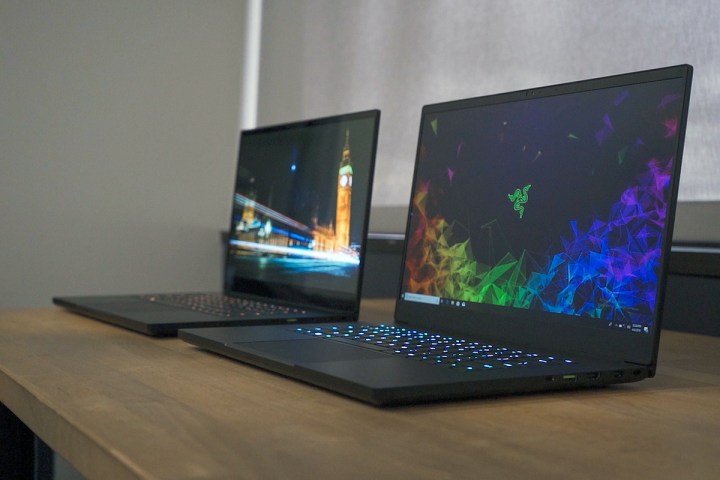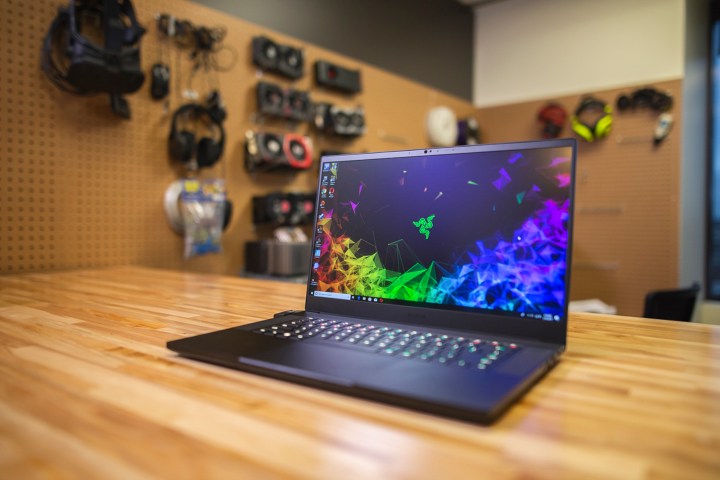
Gaming laptops these days usually come in two display options: 1080p and 4K. One’s for high framerates in games, the other is for sharpness in consuming and creating content. But with the power of modern gaming laptops, there’s a curious hole missing from the available options. QuadHD, or 2,560 x 1,440p resolution.
PC gamers have long known that 1440p is the sweet spot for performance and visual fidelity, so my question is simple: Where are all the 1440p
1080p is still king

A cursory look at any gaming laptop listing will show you that 1,920 x 1,080 with a 144Hz refresh rate is currently the preferred display option by most manufacturers. The reason is simple. Even though laptop GPUs have grown by leaps and bounds, they are still quite limited compared to their desktop kin. Turns out that 1080p is a perfect resolution for even the lowliest mobile GPU, the GeForce GTX 1050, to provide a playable gaming experience with medium to high settings.
Move to more powerful GPUs like the RTX 20-series, though, and you’ll be flying along at well over 100 FPS in most games. At this point, a high refresh rate display really makes sense as it can handle all those speedy frames with no stuttering or tearing.
Additionally, a look at Steam user hardware stats reveals that 62% of gamers are playing with a display resolution of 1080p. This is a staggering number especially when compared to the paltry 4.68% of players running a 1440p resolution. From those statistics alone, it’s not hard to see why manufacturers would focus on the more commonly-used resolution.
But isn’t 4K better?

Well, yes and no.
However, you pay a steep price for that higher resolution. Even powerful desktops with Nvidia Geforce RTX 2080 still struggle to run some games at
Now, if you consider that the laptop variants of GPUs, although better than ever, still run significantly slower than their desktop counterparts. Even the RTX 2080 Max-Q, which is the most powerful GPU currently available in
Our own tests confirm this; even with monstrously powerful
So, you might be thinking, “why not just buy a
The base 1080p model with a 144Hz refresh and RTX 2060 starts at $2,300 while the
1440p is the sweet spot
So, 1080p displays give us the highest performance but at the cost of visual fidelity.
PC gamers have always found 1440p to be the perfect sweet spot for great performance without compromising visual fidelity. Take a look at our favorite gaming monitors. Several of them are 1440p high-refresh monitors. At this resolution, most
Don’t believe me? Let’s look at some benchmarks from one of our reviews of the Razer Blade 15 with RTX 2070 Max-Q. It’s compared to an Asus Zephyrus S GX701 with an RTX 2080 Max-Q. And finally, an Origin RTX Millennium desktop with a full RTX 2080 Ti.
Looking at the numbers, it’s clear the two
So, where are all the 1440p gaming laptops?

Where indeed?
We’ve seen some very relevant arguments for 1080p displays; manufacturers will wisely focus their development efforts around what will sell the most. And clearly, what sells is fast, cheap 1080p displays. The market has seen an influx of faster 144Hz and even 240Hz refresh displays — but all still in 1080p.
Led by the television market and the increased availability of high resolution content,
In spite of all this exciting innovation, it’s certain that for the foreseeable future,
Editors' Recommendations
- 4K gaming monitors are getting cheaper, but I still won’t buy one
- Lenovo unleashes an avalanche of monitors, including a 4K 144Hz beast
- Acer’s TV-sized Predator gaming monitor is OLED, 4K, and living room-ready
- The MSI GE76 Raider is the only gaming laptop with a 1080p webcam and Wi-Fi 6E
- The Asus ROG Zephyrus Duo 15 SE is the first 4K 120Hz gaming laptop




